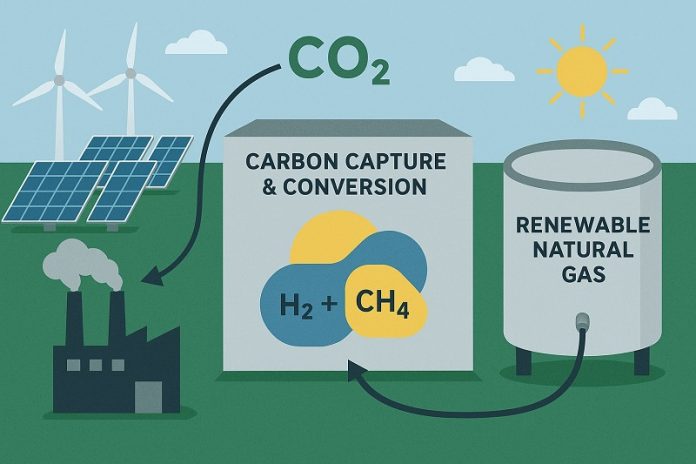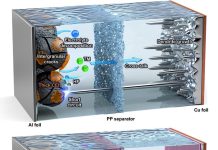
One of the biggest challenges with solar and wind energy is that they don’t always produce power when we need it most.
These sources depend on the sun shining or the wind blowing, and sometimes they generate too much electricity, while other times they fall short. Storing that extra energy for future use has been difficult, especially for long periods.
Now, scientists from Lawrence Livermore National Laboratory (LLNL) have found a promising new solution.
In a recent study published in Cell Reports Sustainability, the researchers describe a way to turn captured carbon dioxide (CO₂) into synthetic natural gas.
This gas could be stored and used as a clean energy source, helping stabilize the power grid and reduce wasted energy.
The process is called reactive carbon dioxide capture and conversion, or RCC. It uses a special material that can both trap CO₂ and convert it into methane, the main ingredient in natural gas.
This dual-function material makes the process simpler and cheaper because it doesn’t require a separate step to purify the carbon dioxide, which normally takes a lot of energy.
According to lead researcher Alvina Aui, this approach makes use of carbon already in the atmosphere rather than digging it up from underground fossil fuel reserves. The result is a renewable form of natural gas that can be used in the same pipelines, storage tanks, and appliances we already have today.
Here’s how it works: First, the dual-function material captures CO₂ from the air or other sources. Then, using extra electricity from solar and wind power, water is split into hydrogen and oxygen. The hydrogen is combined with the captured CO₂ to produce methane. That methane can be stored and used later, especially when renewable energy isn’t available—like at night or on cloudy, windless days.
The research team also ran detailed economic models to see if the process could be competitive with other energy storage technologies. Their results were encouraging. In many situations, the RCC method was cheaper than other large-scale storage solutions. It’s also flexible, because synthetic natural gas can be stored for long periods and transported anywhere through existing natural gas infrastructure.
Scientists at LLNL are now working on testing this process in the lab and creating better materials to make it even more efficient. They also hope to work with industry partners to scale it up for real-world use.
If successful, this technology could become a game-changer—helping the world store clean energy and cut carbon emissions at the same time.
Source: Lawrence Livermore National Laboratory.



